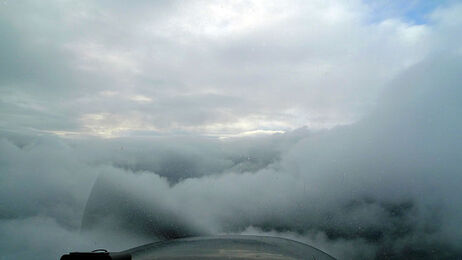|
Introducing Flight into Clouds
The Instrument Rating Certification course is designed to prepare the applicant to operate safely in the Air Traffic Control (ATC) system anywhere in the world. Airlines throughout the world indicate that during the hiring process, instrument flying skills are rated above everything else.
To be eligible to obtain an instrument rating the pilot must have these credentials. Hold a Private Pilot’s License, have a current medical certificate, 50 hours of solo cross country time as a student pilot, 40 hours of actual or simulated instrument flying, 15 hours of instrument training from a Certified Flight Instructor, and some long solo cross countries. To learn more about our Instrument Rating Certification course and how you can enroll, contact us today. Click HERE to download our Instrument Rating cost sheet! |
Prerequisites
Eligibility Requirements:
Aeronautical Knowledge:
Flight Proficiency:
Aeronautical Experience
- Hold a current private pilot certificate.
- Be able to read, speak, write, and understand the English language.
- Receive ground training on the Aeronautical Knowledge (listed below) and pass the FAA knowledge test with a score of 70% or greater.
- Meet the FAA’s minimum Experience Requirements listed below
- Pass a practical test consisting of an oral exam and an in-flight exam with a FAA Designated Pilot Examiner (DPE)
Aeronautical Knowledge:
- Federal Aviation Regulations that apply to flight operations under Instrument Flight Rules (IFR).
- Appropriate information from the “Aeronautical Information Manual” that applies to flight operations under IFR.
- Air traffic control system and procedures for instrument flight operations.
- IFR navigation and approaches by use of navigation systems.
- Use of IFR en-route and instrument approach procedure charts.
- Procurement and use of aviation weather reports and forecasts and the elements of forecasting weather trends based on that information and personal observation of weather conditions.
- Safe and efficient operation of aircraft under instrument flight rules and conditions.
- Recognition of critical weather situations and windshear avoidance.
- Aeronautical decision-making and judgment.
- Cockpit resource management, including crew communication and coordination.
Flight Proficiency:
- Pre-flight preparation.
- Pre-flight procedures.
- Air traffic control clearances and procedures.
- Flight by reference to instruments.
- Navigation systems.
- Instrument approach procedures.
- Emergency operations.
- Post-flight procedures.
Aeronautical Experience
- 50 hours of cross country flight time as pilot in command, of which 10 hours must have been in an airplane.
- 40 hours of actual or simulated instrument time of which 15 hours are flight training from an instrument instructor. Instrument time includes:
- 3 hours of instrument flight training within 2 calendar months before the practical test.
- One cross country flight in an airplane with an authorized instructor, that is performed under IFR that involves a flight of 250 nautical miles.

